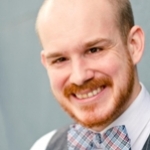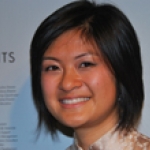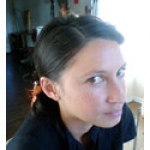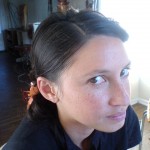
Mr. Robert Lynch
Americans for the Arts & Arts Action Fund Statement on the 2012 Elections
Posted by Nov 08, 2012

Mr. Robert Lynch




Full disclosure here: when I relocated to Silicon Valley in 2009, I told my friends and family in Ohio that I was “moving to San Francisco.”
At that point in time, the two were basically synonymous in my mind—Palo Alto was, to me, a “San Francisco suburb” that happened to be the home of Facebook, and most of what I knew of San Jose came from the Dionne Warwick song.
San Francisco’s cultural reputation is what brought me to California, and because of that city’s reputation, it took me more than a year to really connect with the artistic community in my own back yard.
Silicon Valley has an interesting dynamic. We’re known worldwide for innovation, creativity, and our DIY atmosphere. The technologies being created here are changing world culture in new and revolutionary ways.
Silicon Valley has a population of 3 million to San Francisco’s 800,000. Why is it, then, that so many of our residents feel that they need to travel north to “The City” for an artistic or cultural experience?
What can we, as an artistic community, do to build a reputation that holds up to the high bar our tech industry has set? Are we destined to be known San Francisco’s cultural suburb?
Read More

For the arts lovers who want become arts fighters, many of you are probably saying, “Let’s fight to keep arts in our public schools! Umm…wait…how do we actually do that?”
Indeed, wanting to fight for a cause can be an awesome feeling. However, knowing where to get started can be daunting.
The best way to join the battle to keep arts education in schools is by getting involved with your local school board. Believe it or not, school boards are one of the purist forms of democracy we have in America.
Citizens of a community or district have direct access to school board members. That’s pretty major when you consider the subjects at hand:
1. Our children, our greatest resource
2. Education, the great equalizer in this country
In general, the responsibilities of a local school board include maintaining the local school system structure; developing curriculum; meeting both state and federal standards for public schools; approving the school district’s budget; establishing educational objectives; being involved in the administration of the school district for accountability purposes; and serving as an open forum for the citizens’ input regarding education, reflecting the values and culture of their community.
Now that you know a little about how local school boards operate, how do you get involved?
Read More

 Laura Ng
Laura Ng
Arts administrators, emerging philanthropists, cultural patrons, and arts practitioners converged at the Atwater Village Theater on October 20 for Emerging Arts Leaders/Los Angeles' full-day Creative Conversation, asking again, what is “creative placemaking”? Or, in the long-form title, to explore “Sparking Inclusive Dialogue Through Creative Placemaking.”
Dan Kwong, project leader for Great Leap’s COLLABORATORY, may have put it best when he compared broaching the question to the ambivalence and trepidation felt when one is asked to measure the impact of arts on social building.
With disciplines as divergent as Anne Bray’s work in media arts, Dan Kwong in performance, and Brian Janeczko in architecture and industrial design/fabrication, one unifying outlook voiced by the panelists was that creative placemaking must happen organically with a collaborative conscientiousness responsive to a specific community.
Keynote speaker John Malpede framed the particularity of elements needed to come together by sharing his own experience at the Los Angeles Poverty Department, which he founded almost serendipitously.
The performance artist volunteered with a group of lawyers offering their services pro-bono to the residents of L.A.’s Skid Row until he became a de facto paralegal, who so galvanized the community that those same clients involved themselves into launching self-produced dramatic performances.
With no permanent headquarters, their activities attracted the attention of screenwriters from other parts of the city and instigating conversations with numerous neighborhood organizations, such as LAMP and the Skid Row Players’ drummers, materializing improvement amenities such as the “funky trash cans” provided by OG Man that would not be readily perceived as an urgent need to those outside in what they termed Normalville.
Read More

It was during my third year as an undergraduate art student (Go Slugs!) that I met Frank, my abstract painting professor.
I’d never been more frustrated with a syllabus or a teacher in my whole life as I’d been with Frank. He gave us rules by having none. “Paint like you mean it,” he would say. “But don’t think about it. And don’t really mean it.”
The careful, thoughtful, planner inside me cringed every day in that studio. I didn’t understand what I was supposed to do, so I constantly monitored what everyone else was doing and followed instructed suit.
The bi-product: A six-foot tall canvas spread wildly with a cake frosting texture of Alizarin Crimson and Flake White oils. It took me over a month to create and countless two a.m. sessions to perfect.
I hated it. Truly—I gutturally despised it. It didn’t get better when I squinted my eyes. Or when I turned it upside-down. Frank loved it the moment he laid his eyes on it. “This is the best thing I’ve seen this year,” he gushed, hands literally clasped to his cheeks.
Read More


Leticia Fernandez Ivins
Southern California is dense with MFA programs – so dense that these artists are a cornerstone of the creative economy and help define the creative capitol that is Los Angeles.
Then, why am I not working with more (any, frankly) of this fresh post-grad crop of creative thinkers?
This is not out of ageism (and I adore the artists that I work with today), but yesterday I started to wonder how the 50+ public art programs in the region might better harness this concentration of creative talent in our own backyard?
Though graduate-level curriculum tends to be concept-based, some art professors have cleverly inserted the “art of business” into the MFA formula.
Yesterday, I lectured for an MFA course called, Graduate Professional Development.
This is the second course that I have instructed on the topic of public art history and practice to fine arts students.
To start the class, I asked everyone to state their name, current media, and either talk about a public artwork that they created or to relay a powerful public art encounter.
Read More